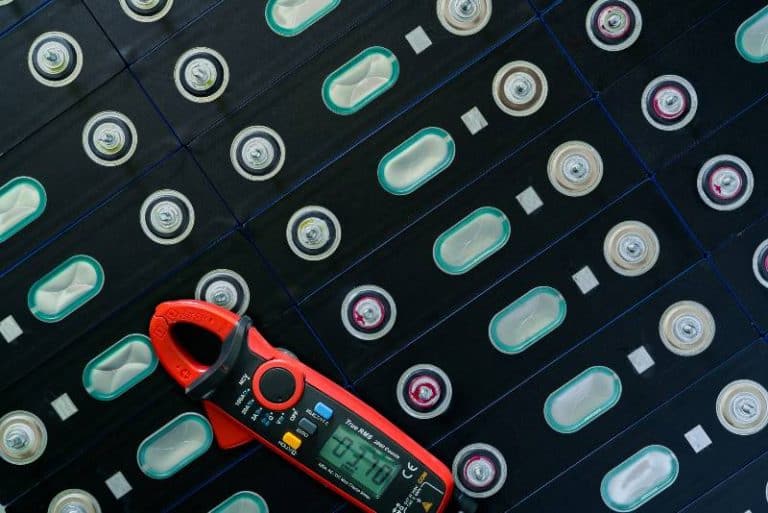The Truth About How Long Electric Vehicles Can Idle
There have been a lot of discussions lately about the best way to power our vehicles. Some people are adamant that electric vehicles are the way of the future, while others believe that gasoline engines will always be more efficient. In this blog post, we will explore how long can an electric vehicle idle.
The environment, the efficiency of the electric motor, and the size of the battery all play a role. But generally speaking, an electric vehicle should be able to sit idle for at least an hour without any issues. It is conditional on several variables, such as the battery life, the temperature, and the type of EV being driven.
Key Takeaways
- When it comes to the longevity of an electric vehicle, the size of the battery and its overall efficiency are two major factors. The temperature also plays a role in how long an EV can idle without losing power.
- Generally speaking, most EVs should be able to sit idle for at least one or two hours without any issues.
- It is important to note, however, that the specific characteristics of each vehicle will affect its ability to sit idle for long periods.

To most people, the issue of excessive engine idling is not top of mind when considering electric vehicles. It’s possible that not everyone is aware that electric cars can be parked. However, they can and do, and a substantial amount of electrical energy is lost in this way.
When an electric vehicle is parked without the driver activating the “Park” mode on an automatic transmission, the vehicle is idling. All systems are connected to the drivetrain are still operational. So, electrical power is required to maintain these systems’ functionality.
How long can an EV idle?
Idling Misconceptions
A great deal of misinformation circulates regarding how long a stranded EV “survives” in a winter storm, with most predictions being grossly inadequate. However, there is nothing to be concerned about because battery technology is on our side.
Here are a few things to keep in mind first concerning gas-powered cars sitting idle over the winter:
- Carbon monoxide from the car’s engine can be fatal if the vehicle is trapped in a snowdrift, avalanche, or other situation where fresh air is scarce.
- The amount of gas in gasoline cars is the primary factor in determining the length of time the engine can remain at a constant idle speed; refilling is possible if you have spare gas or if someone donates a spare canister, but doing so in hazardous driving circumstances comes with its own set of dangers.
- In some vehicles, you may go from a full tank to empty in almost 30 hours of idle.
- Heating the interior of gas-powered cars with the wasted heat produced by the engine’s moving parts is a very wasteful method if the vehicle is not in motion.
- When driving an EV, you won’t have to worry about the first issue associated with idling in the winter. Since there are no exhaust fumes to worry about, the electric car’s heater can be used in closed environments.
- The second issue is broadly shared by both gas cars and electric vehicles. You can only stay warm in your automobile for as long as your fuel tank or battery has to juice. However, unlike gas-powered vehicles, recharging an EV motor while stuck is not commonplace or practicable. Conversely, as EVs become more widespread, demand will increase for mobile chargers and emergency batteries.
Also, it is difficult to give a universally applicable estimate for how long a gas automobile can idle in cold weather due to the wide variation in fuel economy and tank size among different models. With a full tank of gas in a typical ICE vehicle, we’ve settled on a baseline of 30 hours.
While it’s true that gas vehicles use inefficient technology to heat their interiors, (and they have internal combustion engines that keep burning fuel when running) Since there isn’t much to waste in a parked electric vehicle, the cabin heat comes from powering up resistive components, driving stators, or the seats and wheel. It takes energy to generate this heat, so knowing how much energy an EV needs to keep its occupants comfortable is crucial.
Factors that affect the length of time an EV can idle
Here are some factors that affect the length of time Electric cars idle:
- The amount of electricity in the electric car’s battery.
- The amount of power-consuming accessories being used, such as headlights and defrosters.
- The temperature outside.
Comparison of idle times for EVs versus gasoline-powered vehicles
Idling efficiency is a significant factor in the total cost of ownership, and studies and interviews with industry professionals have shown that electric vehicles are more efficient than gas cars.
UTC found that the majority of an automobile’s charge is used to power the motor, which in turn propels the car ahead. The power ranges from 50 to 60 kilowatts, depending on the vehicle.
A typical electric car uses roughly a kilowatt of power when it is idling.
The electric vehicle’s fundamental electronics, such as the climate control, radio, and power windows, utilize electricity even when the car is parked and not in use.
There is no significant drain on an electric vehicle’s charge, according to an expert, even while the vehicle is idling in traffic. But remember, Electric vehicles lose charge when parked although it is minimal, it can add up over time.
It is estimated by SDHEC that a gas-powered vehicle loses half a gallon of fuel per hour when idling.
According to one of the Experts, “just around 20% of the energy in that gas or fuel will actually drive you down the road” when using gas or diesel. “Exhaust and heat dissipate the rest. Because of this, driving an electric vehicle is a far more cost-effective option. There is no better way to waste time in traffic.”
Advantages and disadvantages of idling in an EV
Here are some of the advantages of idling in an EV:
Advantages
No emissions
The electric motor of an EV burns no gas or oil, so there are no emissions to speak of.
Energy efficiency
EVs are designed to use power efficiently, so they often have a longer range than comparable combustion engines. Plus, they’re much more efficient when idling because they aren’t using any fuel.
Cost savings
Since there’s no need for fuel and little need for maintenance, EVs are typically cheaper than their gas-powered counterparts over time.
Disadvantages
Idling in your EV is a great way to reduce the amount of gas you use, but it does have some drawbacks:
Potential battery drain
When you’re idling in an EV, your car is still using energy—just not powering the engine. That means that your battery is still draining, even if you’re not getting anywhere.
Decreased driving range
A total of 729 kWh of energy was consumed in April 2021, allowing the cars to go a total of 1448 miles. The amount of energy wasted due to idling was 83 kWh or 11% of the total. Its energy efficiency was 1.99 miles per kWh. Eliminating idle would have resulted in a better score of 2.24.
One vehicle’s worst-case scenario included the loss of 113 kWh of energy over a distance of 733 miles. That’s the equivalent of wasting 28% of the energy consumed, or the ability to drive an extra 250 miles.
Tips for maximizing idle time in an EV
With the right planning, you can make even extended idling comfortably. There will always be circumstances when it makes sense to sit and wait, whether you’re a passenger or the driver—and making the most out of this downtime is possible. Consider these tips to avoid wasting your time waiting around!
Strategies for conserving battery power while idling
in an EV include:
- Turning off all unnecessary accessories, such as the radio and climate control.
- Setting a timer to remind yourself when it’s time to turn off your car.
- Parking in a shady spot, if possible, to reduce heat buildup inside the vehicle.
- Limiting how long you idle in traffic, if possible.
- Utilizing regenerative braking to recapture energy while driving.
Recommendations for maximizing idle time
The most important factor in maximizing idle time is to ensure that your EV’s battery is always adequately charged. To do this, it is important to choose an EV that is able to hold a significant amount of charge and has a reliable battery system. Additionally, you should always be sure to plug in your vehicle whenever possible. This will help ensure the battery maintains its full capacity while also allowing for longer idle times without needing additional charging.
Different situations (e.g. traffic, cold weather)
According to Matthias Tonn, principal program engineer on the Ford Mustang Mach-E, “heating the interior and battery is by far the major secondary energy use” of electric vehicles.
Clemént Heinen, attribute lead in Polestar’s vehicle development team, adds, “When you compare an ICE to an EV, ancillary systems become more dominating.” While electric vehicles are propelled by a highly efficient motor and battery pack, conventional internal combustion engine (ICE) vehicles use the engine’s waste heat to warm the vehicle’s interior. The climate system, for example, has a profound impact, and its impacts are readily apparent.
Bishop’s estimates incorporate the use of a circulation fan, heating, and cooling systems, heated front and back screens, heated mirrors, seats, and a steering wheel. The main energy consumers in this group are the heating and air conditioning systems, which can take up to 3 kW and 4 kW of power, respectively, and reduce range by 8.3 km to 11.1 km per hour of operation.
It’s interesting to note that heated seats are a significantly more efficient method of warming the car’s occupants than the conventional alternative, using only 50 watt-hours per seat and 560 meters of range each hour.
If you’re interested in what’s inside an EV’s battery, make sure to read this article to find out!
How Long Can An Electric Vehicle Idle FAQs
How Long Can an Electric Car Idle With AC On?
As long as the battery is charged, an electric vehicle may sit in traffic with the air conditioning on. A depleted battery will cause the car to lose power and switch off. For this reason, it’s crucial to avoid letting the battery run too low. Many elements come into play, including the size of the car’s battery and the ambient temperature. In any case, we can provide you with some broad recommendations.
Having an electric vehicle is a great way to reduce your carbon emissions and preserve the environment – but it also comes with its own set of challenges. To keep warm in chilly weather, you’ll need to plan ahead because battery size determines how long your car’s heater can run while idling. In colder temperatures, where more work is required from the heater to maintain cabin comfort, larger batteries will give you longer warming time than smaller ones!
Why Does An Electric Car Not Idle?
The electric motor in a moving electric automobile will only turn the driveshaft. Although the vehicle does not “idle” in the conventional sense, it can nevertheless drain power from the battery if other internal systems, such as the air conditioner or heater, are running while it is parked.
Do Electric Cars Turn Off When You Stop?
So, the car’s engine shuts off, but it’s still operational. The air conditioner, radio, and computer in today’s EVs all run on a battery. Even though the engine is turned off when the car is parked, the battery is still being used to power the car’s optional extras.
How long can an electric car idle?
When the vehicle is halted, the electric motor is not “idling,” so no energy is being wasted.
Most cars, however, have an “on” option where the A/C and radio are functional, and you can shift into drive. While others, like the Tesla, activate when the key is in proximity, others, like my Nissan Leaf, have a physical on/off switch.
A Nissan Leaf, with its modest 24 kWh battery, may rest for roughly a week before the power is completely depleted. Assuming the computer doesn’t need much more power than the Leaf’s, a Tesla with a 100 kWh battery might sit for nearly a month.
How long can an electric car idle and run the heater?
Generally speaking, the larger the battery, the longer the heater can be on. According to Michael Stanyer, program coordinator with Plug In BC, most electric vehicles on the market now have batteries that can store anywhere from 50 to 80-kilowatt hours of energy. Assuming some additional draw from the vehicle components like the infotainment system, a 50 kWh battery would run the heat at 1 kW for over 50 hours.
Conclusion
The green revolution is here and EVs are a big part of the future. They represent one of the best ways for companies and consumers to decrease their carbon footprint. Whether you live in a major city or in the country, an EV will be able to meet your needs for transport. They are safe, efficient, and economical. And as technology continues to improve, there will be more options available from automakers who have already committed to equipping their fleets with EVs.
Though it is true that an electric vehicle can sit idle for a long period of time without causing any damage to the environment, it is also true that sitting idle is not the most energy-efficient way of driving an EV. Drivers need to think about how they are using their cars if they want to help save on energy costs and save on battery life.






